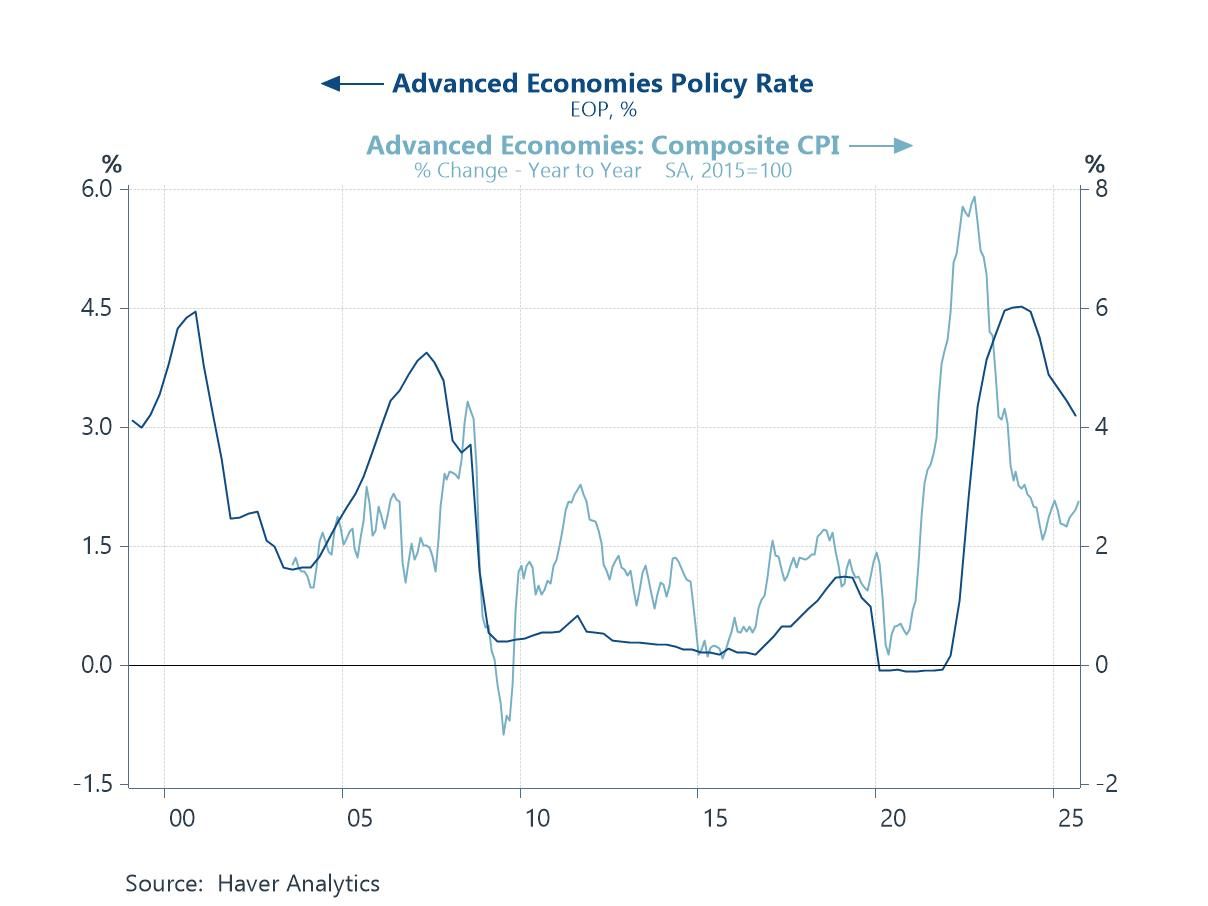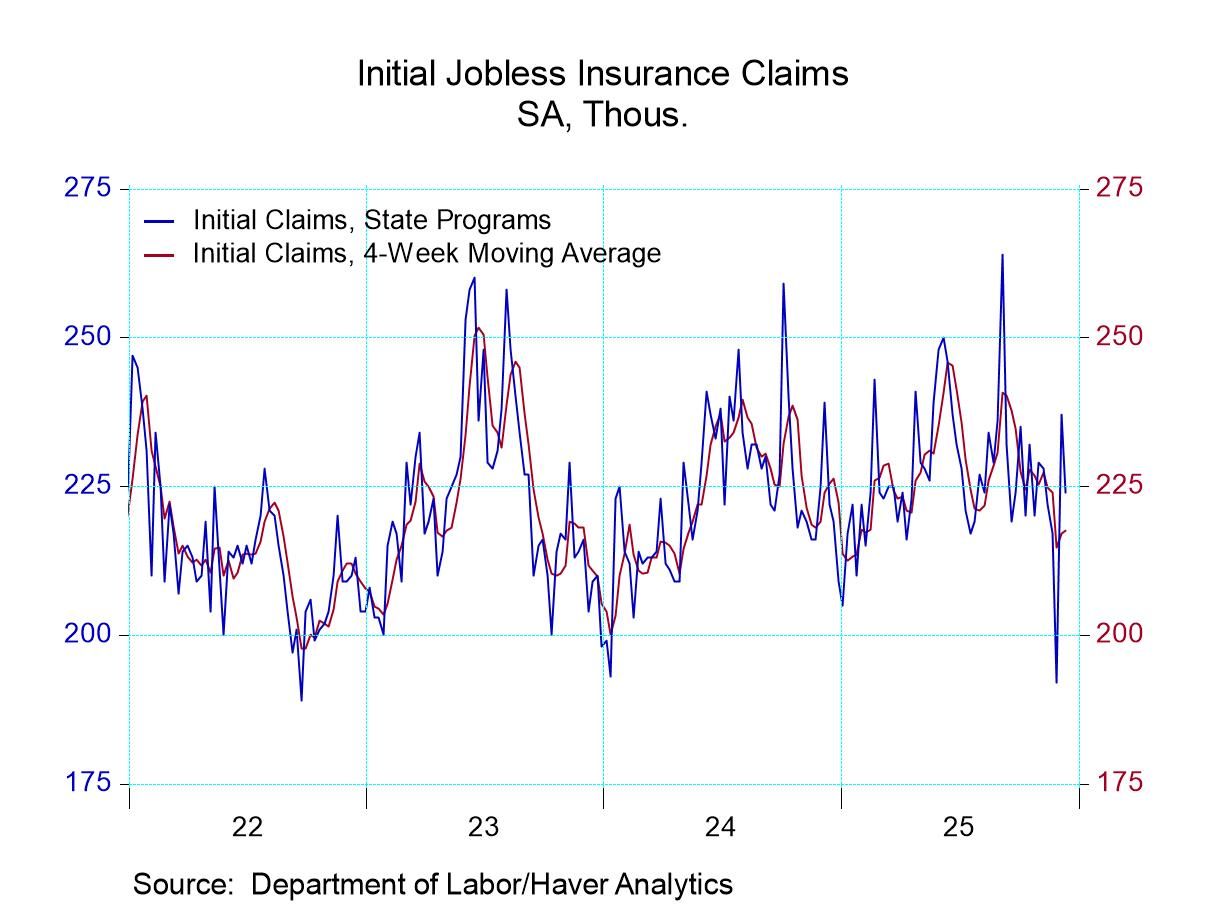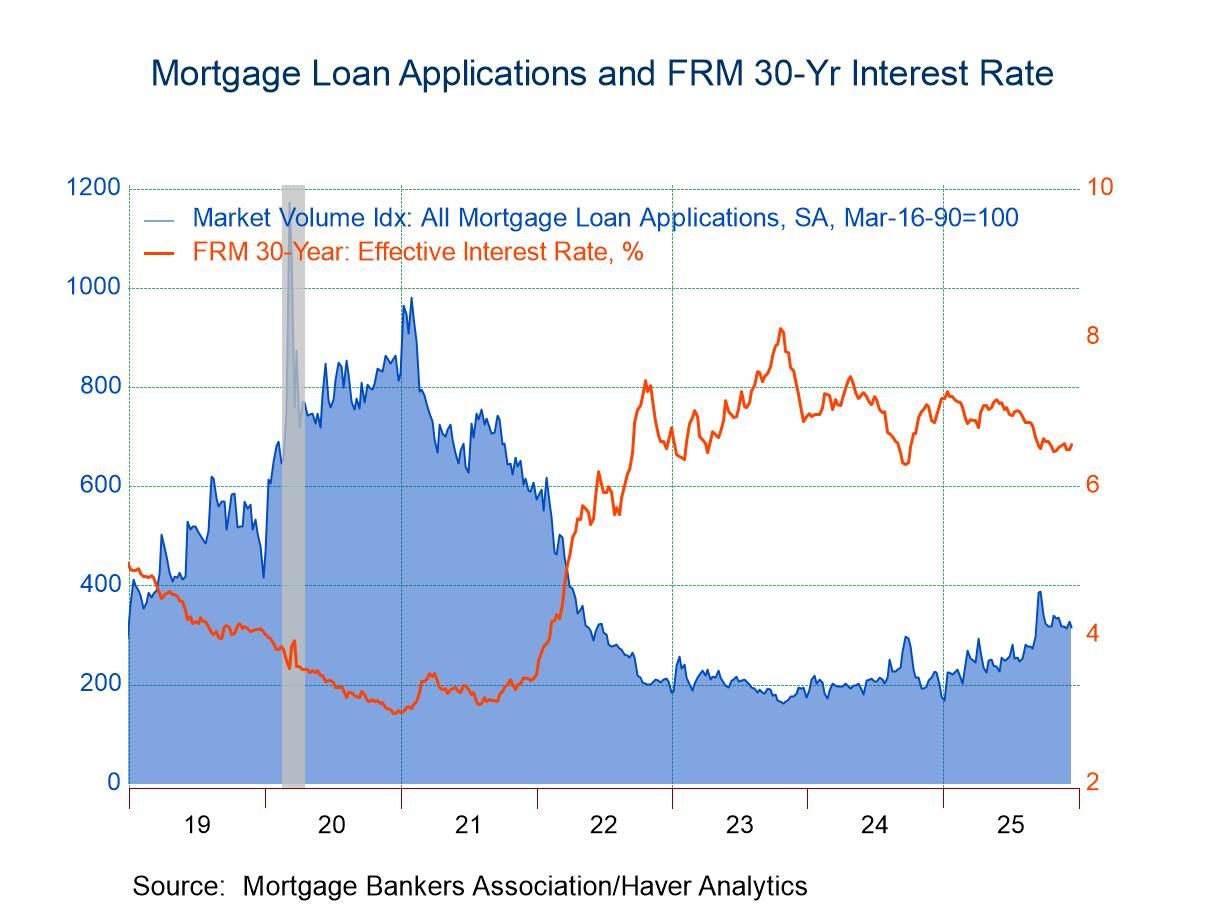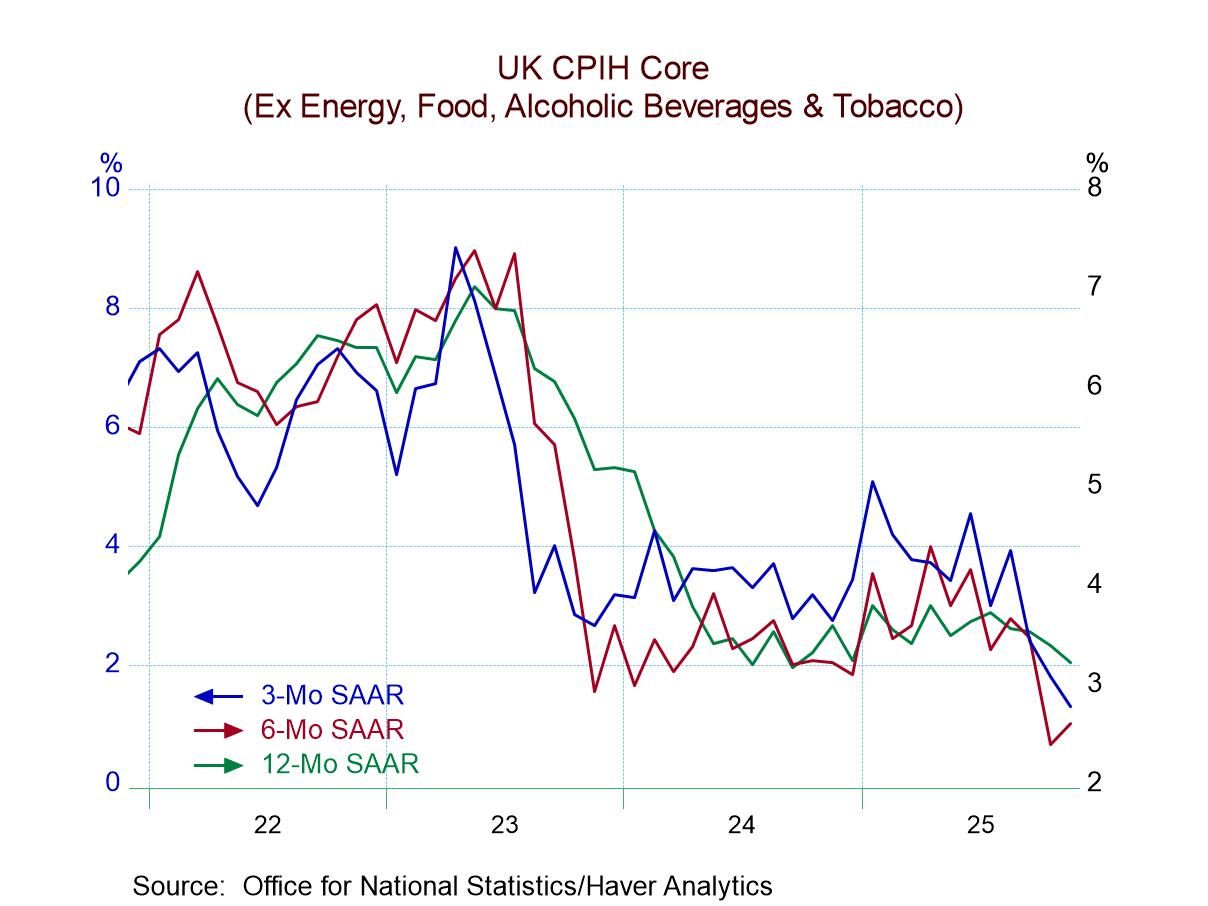 Global| Jun 08 2018
Global| Jun 08 2018U.S. Wholesale Inventories Inch Higher; Sales Strengthen
by:Tom Moeller
|in:Economy in Brief
Summary
Wholesale trade inventories increased 0.1% (5.8 y/y) during April following a 0.2% March gain, revised from 0.3%. The April rise matched the increase reported in the advance report released on May 30 and compared to no change expected [...]
Wholesale trade inventories increased 0.1% (5.8 y/y) during April following a 0.2% March gain, revised from 0.3%. The April rise matched the increase reported in the advance report released on May 30 and compared to no change expected in the Informa Global Markets Survey.
Durable goods inventories increased 0.2% (6.2% y/y) in April following a 0.7% rise in March. The 6.2% y/y gain compared to moderate inventory decumulation early in 2016. Electrical product inventories increased 0.2% (7.8% y/y) after two months of 1.0% gain while machinery inventories held steady (5.4% y/y) following a 0.2% rise. Computer equipment inventories increased 0.9% (-1.0% y/y) after a 2.2% decline. Inventories of nondurable goods were unchanged (5.2% y/y) following a 0.6% decline. A 0.8% increase (-0.9% y/y) in inventories of grocery products reversed a 0.9% fall. Apparel inventories were off 0.6% (-1.1% y/y) after a 0.4% decline. Petroleum inventories surged 3.1% (7.3% y/y) with higher prices while inventories of paper products declined 1.3% (+4.6% y/y), and reversed two months of increase.
Sales at the wholesale level gained 0.8% (7.8% y/y) during April following a 0.4% March increase which was strengthened from last month's report. Revised data indicate strong growth through last year. A 0.4% April rise had been expected in the Action Economics Forecast Survey.
Durable goods sales increased 0.8% (7.8% y/y) after a 0.4% increase. Motor vehicle sales declined 0.7% (+6.2% y/y) after two months of strong rise. Electrical product sales fell 1.5% (+6.1% y/y), following a 0.8% rise. Machinery sales surged 1.9% (12.4% y/y) after a 0.1% dip, and furniture sales jumped 1.6% (2.3% y/y) following a 1.9% fall. Nondurable product sales strengthened 0.7% (7.5% y/y) after a 0.8% rise. Petroleum product sales gained 1.5% (22.5% y/y) after a 1.0% gain. Apparel sales fell 2.9% (+4.1% y/y) after holding steady, but chemical product sales surged 2.0% (12.7 y/y) after a 1.2% fall.
The inventory-to-sales ratio at the wholesale level eased to 1.28 in April after three months at 1.29. It remained well below its most recent high of 1.38 in February 2016.
The I/S ratio for durable goods eased to 1.59 from 1.60. It remains well below its most recent peak of 1.74 in January 2016. The furniture I/S fell sharply to 1.86 from a recent high of 1.92. The machinery and equipment I/S ratio also plummeted to a six year low of 2.57, well below the 3.02 high in early-2016. The I/S ratio for nondurable goods declined to 0.98 from 0.99. It was below the 1.09 ratio two years ago. The petroleum industry I/S ratio rose slightly m/m but remained near its lowest level since 2014, down from the 0.63 high in early 2016. The I/S ratio in the chemical industry was similarly depressed and the apparel industry ratio has been steady near 2.10 for two years.
The wholesale trade figures are available in Haver's USECON database. The expectations figure for inventories is contained in the MMSAMER database. Expectations for sales are from the Action Economics Database.
U.S. Home Affordability Continues to Fall
by Tom Moeller June 8, 2018
The National Association of Realtors reported that the Composite Index of Home Affordability declined 8.8% y/y during April to 145.8, the lowest level since October 2008. The index was 32.0% below its peak in January 2013. During the last ten years, there has been a 60% correlation between the affordability index level and the y/y change in existing single-family home sales.
Higher prices have reduced affordability. The median sales price of an existing home strengthened 5.5% y/y to $259,900. The price rise was accompanied by a higher average mortgage rate of 4.66%, up from a 3.43% in December 2012. Together, principal & interest payments rose to $1,073 or 17.1% of median income, the highest percentage since August 2007. That percentage compared to a low of 11.7% early in 2013. Growth in median family income slowed to 2.8% y/y from 3.9% during all of 2016.
The Housing Affordability Index equals 100 when median family income qualifies for an 80% mortgage on a median priced existing single-family home. A rising index indicates more buyers can afford to enter the home-buying market. Data on Home Affordability can be found in Haver's REALTOR database. Interest rate data can be found in the WEEKLY and DAILY databases.
| Housing Affordability | Apr | Mar | Feb | Apr Y/Y | 2017 | 2016 | 2015 |
|---|---|---|---|---|---|---|---|
| Composite Index | 145.8 | 150.0 | 160.1 | -8.8% | 158.5 | 168.2 | 168.0 |
| Median Sales Price (Existing Single Family Home) | $259,900 | $251,500 | $242,600 | 5.5% | $247,508 | $233,642 | $221,350 |
| Monthly Mortgage Rate | 4.66% | 4.63% | 4.42% | 4.11% | 4.20% | 3.88% | 4.03% |
| Principal and Interest Payment | $1,073 | $1,035 | $974 | 12.6% | $967 | $880 | $849 |
| Median Family Income | $75,093 | $74,944 | $74,828 | 2.8% | $73,545 | $70,941 | $68,267 |
| Payment as a Percent of Income | 17.1 | 16.6 | 15.6 | 15.6 | 15.8 | 14.9 | 14.9 |
Tom Moeller
AuthorMore in Author Profile »Prior to joining Haver Analytics in 2000, Mr. Moeller worked as the Economist at Chancellor Capital Management from 1985 to 1999. There, he developed comprehensive economic forecasts and interpreted economic data for equity and fixed income portfolio managers. Also at Chancellor, Mr. Moeller worked as an equity analyst and was responsible for researching and rating companies in the economically sensitive automobile and housing industries for investment in Chancellor’s equity portfolio. Prior to joining Chancellor, Mr. Moeller was an Economist at Citibank from 1979 to 1984. He also analyzed pricing behavior in the metals industry for the Council on Wage and Price Stability in Washington, D.C. In 1999, Mr. Moeller received the award for most accurate forecast from the Forecasters' Club of New York. From 1990 to 1992 he was President of the New York Association for Business Economists. Mr. Moeller earned an M.B.A. in Finance from Fordham University, where he graduated in 1987. He holds a Bachelor of Arts in Economics from George Washington University.






